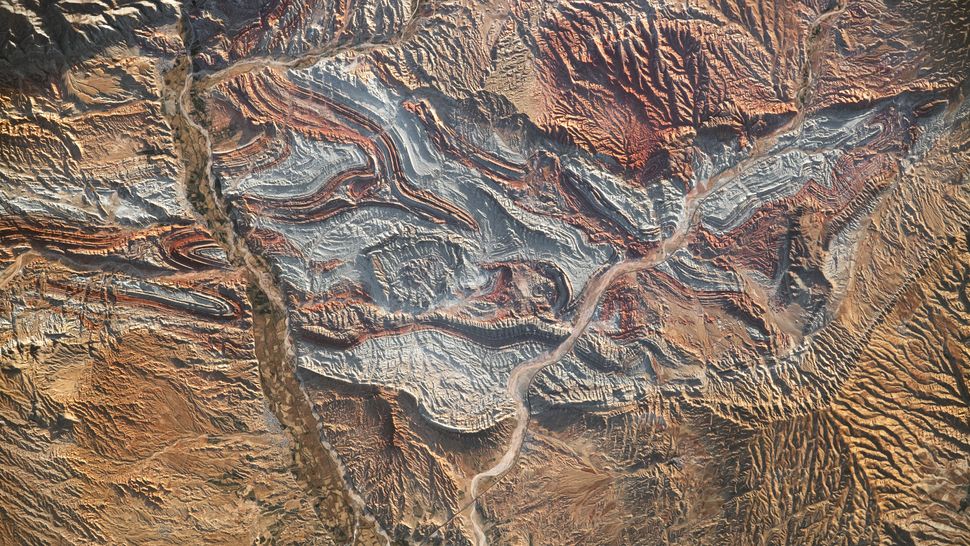Iran's folded rocks: The crumpled mountains at the intersection of Asia and Europe
By Sascha Pare
published 2 days ago
Iran's folded rocks are a colorful formation that is part of the Greater Caucasus mountains, which formed when the Eurasian tectonic plate collided with the Arabian plate millions of years ago.

Iran's folded rocks are millions of years old, having formed when the Eurasian and Arabian tectonic plates collided. Satellite image from 2023. (Image credit: NASA Earth Observatory)
Iran's folded rocks are rugged mountain ridges and valleys to the southwest of the Caspian Sea. They are an extension of the Greater Caucasus mountain belt, which also stretches along Russia's border with Georgia and Azerbaijan.
The folded rocks sit at the intersection of Asia and Europe, where major tectonic forces converge. The rocks are formed of countless sedimentary layers, which were upturned and creased into the landscape we see today during the initial collision between the Arabian and Eurasian tectonic plates. The timing of this collision is hotly debated, with estimates ranging from 10 million to 50 million years ago.
"A tectonic collision between Eurasia and Arabia over millions of years compressed these colorful rock layers, bending them into large folds," NASA officials wrote on the social platform X in January 2024.
The Arabian and Eurasian plates are still converging, and recent research indicates a chunk of oceanic crust that separated the two plates before they collided is now being torn apart under Iraq and Iran. The Neotethys oceanic plate appears to be pulling the region down from below, resulting in an unusual accumulation of sediment at the surface.
More:
https://www.livescience.com/planet-earth/geology/irans-folded-rocks-the-crumpled-mountains-at-the-intersection-of-asia-and-europe
